Visit Alcântara
We, Quilombola communities of Alcântara, are home to rich and diverse cultures rooted in generations of land settlements and place-based knowledge transfer. From coastal beach communities to villages nested in the Amazonian forest, beauty abounds in our region! Just a short drive away from the elegant port city of Alcântara and a ferry boat ride away from the Maranhão state capital of São Luís, your visit would not fall short of exciting activities to participate in.
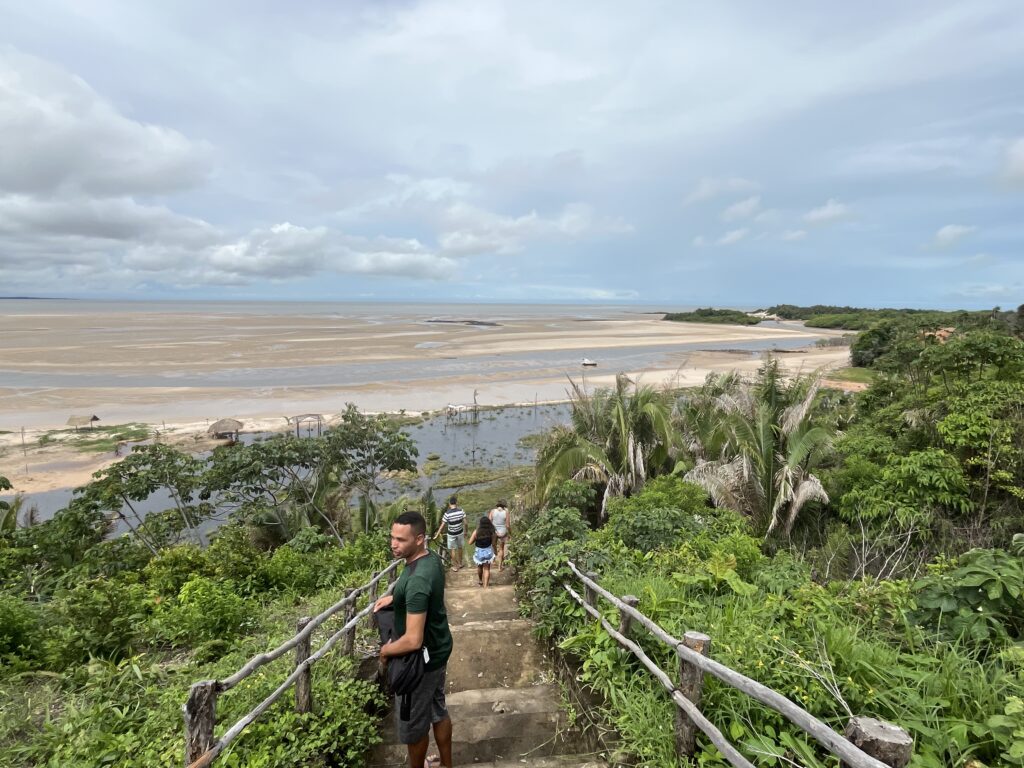
Walking down to the beach in Vista Alegre Quilombo, Alcântara, Maranhão © 2024 Cat Diggs
Alcântara's Heritage
The about 200 communities that make up our region of Alcântara continue to organize and unite in our struggle for collective title. In the face of continued threats of displacement and land grabs by the Brazilian State or private developers, your visit reaches beyond tourism, building solidarity for Quilombola land rights.
Alcântara, An Interactive Tourism Map
Scroll below to discover Alcântara’s communities through our interactive map, which highlights Quilombos and Agrovilas. Alcântara experiences two distinct seasons—the lush rainy season from January to June, and the dry season from July to December—each shaping the area’s diverse and storied cultural backdrop. You can find the English version of this Touristic Map at this link.
“Community tourism… it brings the means so that we can have a more dignified life… The tourist will learn from our culture, from what we have, will buy our fish, will enjoy what is ours, and will leave the income to the community… this brings possibilities for a more dignified life. I believe the quilombos can ascend with tourism.”
– Moises Costa Santos, Vista Alegre – Community-Based Tourism Entrepreneur and Community Leader
Touristic Sites and Activities
While your visit to the region of Alcântara will be punctuated with the experience of learning about our staple Quilombola subsistence and artisanship activities, some practices and festivities remain seasonal in nature. We will be proud to share with you the many traditions that have tied us to each other and our lands for generations! Below are a few core examples of subsistence practices, craftsmaking and musical traditions, as well as leisure activities, and festivities, that have ensured our physical, social, economic and cultural futurity as Quilombola communities of Alcântara.
Traditional Activities
Harvesting Babassu
Babassu harvesting is a vital activity in Quilombola communities, involving the extraction of babassu palm nuts for various purposes. The nuts are processed to extract oil used in cooking, cosmetics, and soap making, providing a sustainable source of income for community members while preserving their connection to the land.
Making Cassava Flour (Manioc)
In Quilombola communities of Alcântara, making cassava flour is a traditional activity involving the processing of cassava roots into flour. This staple food item is prepared through a series of steps including peeling, soaking, chopping, grating, pressing, straining, sifting, oven-toasting, and fermenting, contributing to the community’s cultural and culinary heritage.

Women breaking Babassu coconut. © Government of Tocantins
Availability
April to October
Locations
Canelatiua
Itamatatiua
Santa Maria
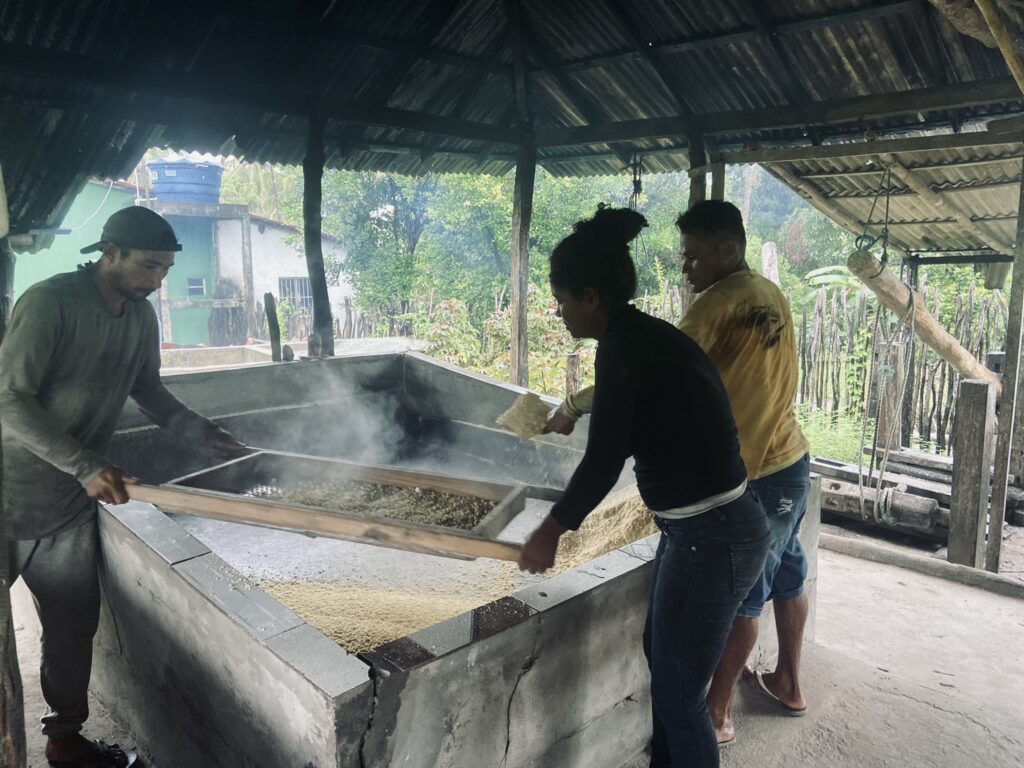
Local artisans making cassava flour in Canelatiua Quilombo, Alcântara, Maranhão © 2024 Cat Diggs
Availability
October to February
Locations
Canelatiua
Itamatatiua
Santa Maria
Collecting Juçara (Açaí )
Juçara, commonly known as açaí, is a palm tree fruit native to the Amazon rainforest. In Quilombola communities, collecting juçara berries is a traditional activity, providing both sustenance and economic opportunities. The berries are rich in nutrients and antioxidants, and their collection supports the local economy through sales and trade.
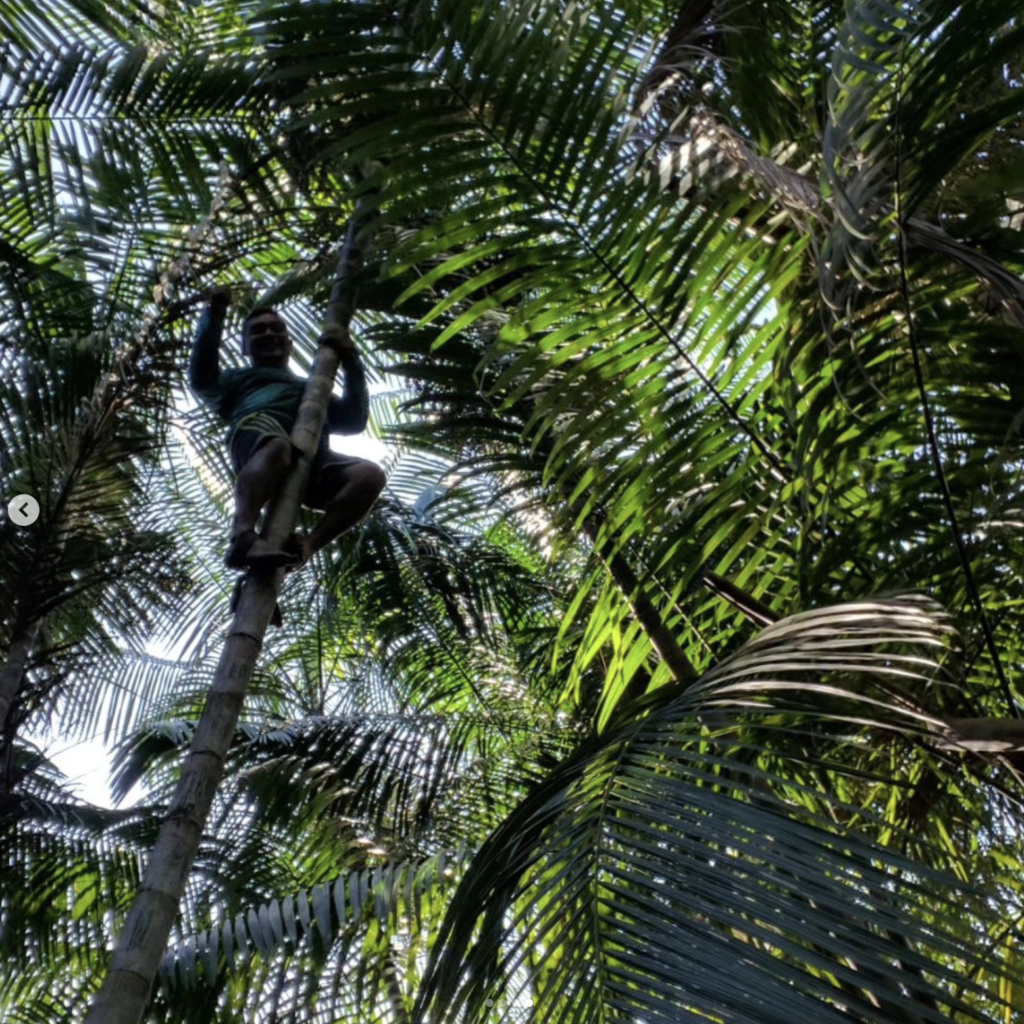
Juçara berry baskets, Alcântara, Maranhão. © 2024 @quilombocanelatiua
Subsistence Farming
Most of the Quilombola peoples living in the region of Alcântara lead rural lifestyles and have thrived for generations off small-scale subsistence agriculture of a wide variety of crops, including manioc (or cassava), corn, beans, rice, watermelon, and peanuts, amongst others. These crops serve many purposes in the lives of our communities, from feeding our families, to dying some of our clothing, and to feeding our livestock.
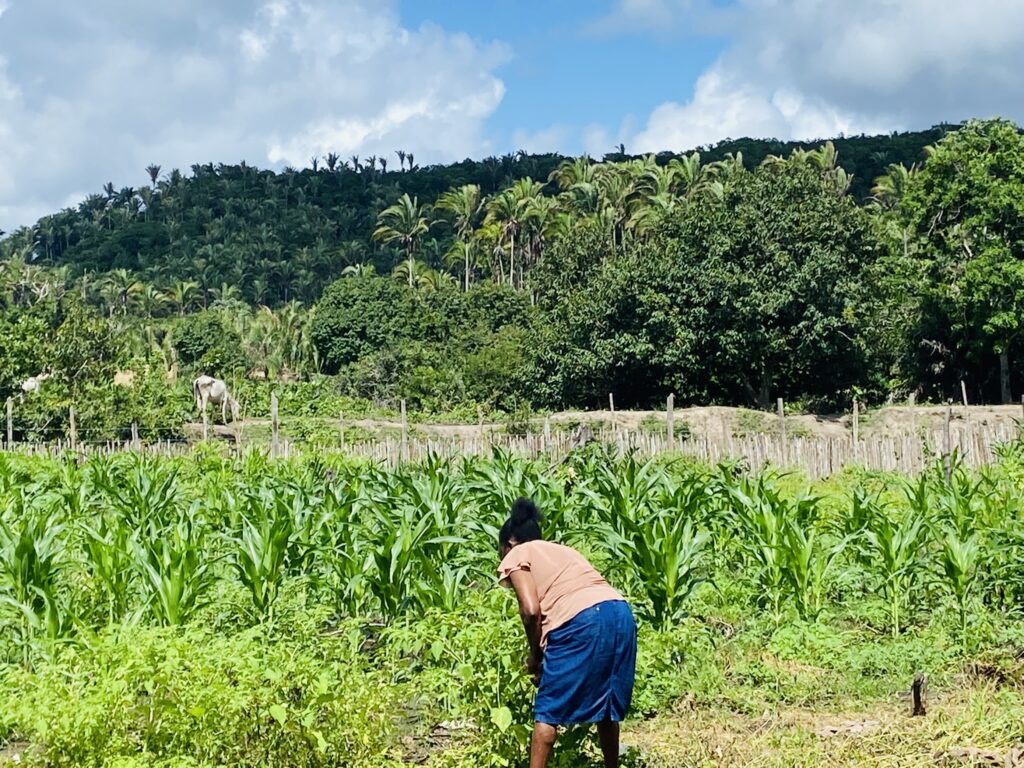
Small scale farm in Itamatatiua Quilombo, Alcântara, Maranhão © 2024 Ana Paula Pimentel Walker
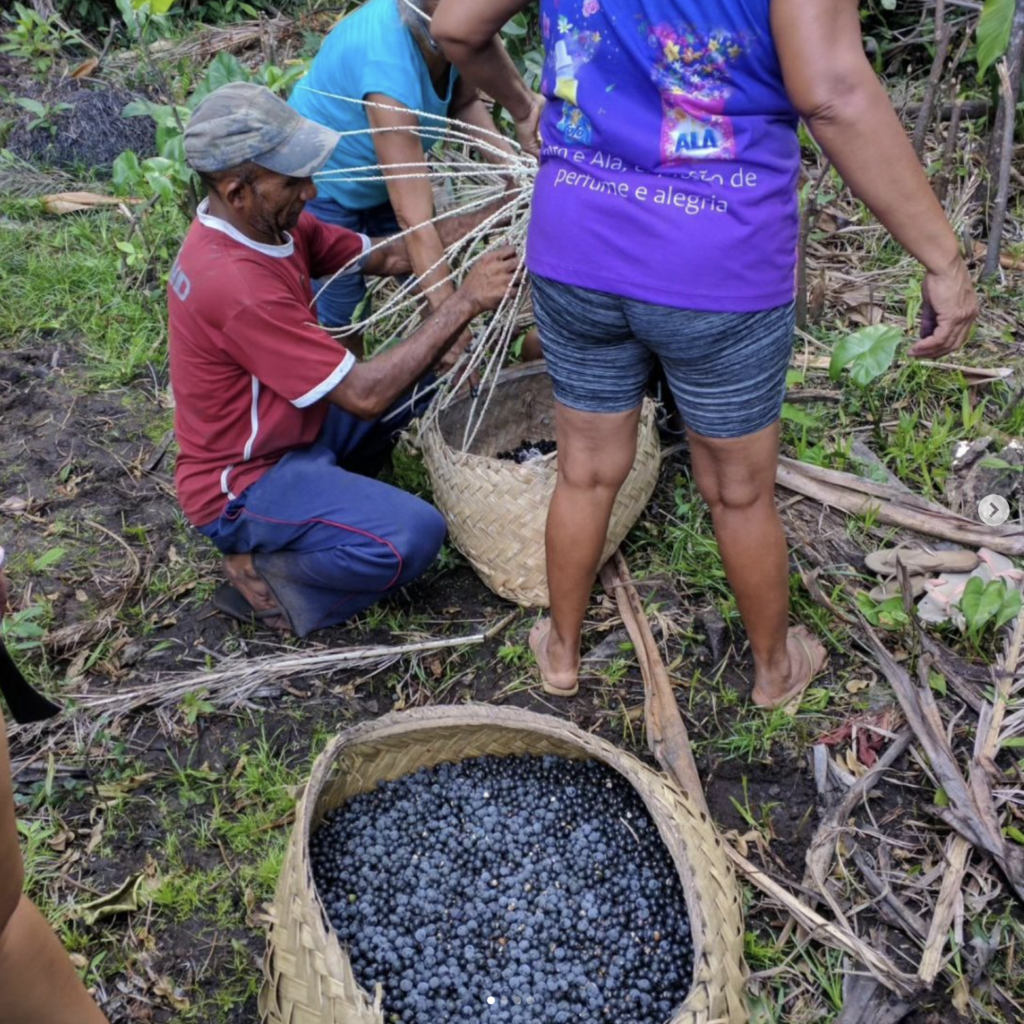
Juçara berry baskets, Alcântara, Maranhão © 2024 @quilombocanelatiua
Availability
October to January
Example locations
Canelatiua
Itamatatiua
Santa Maria
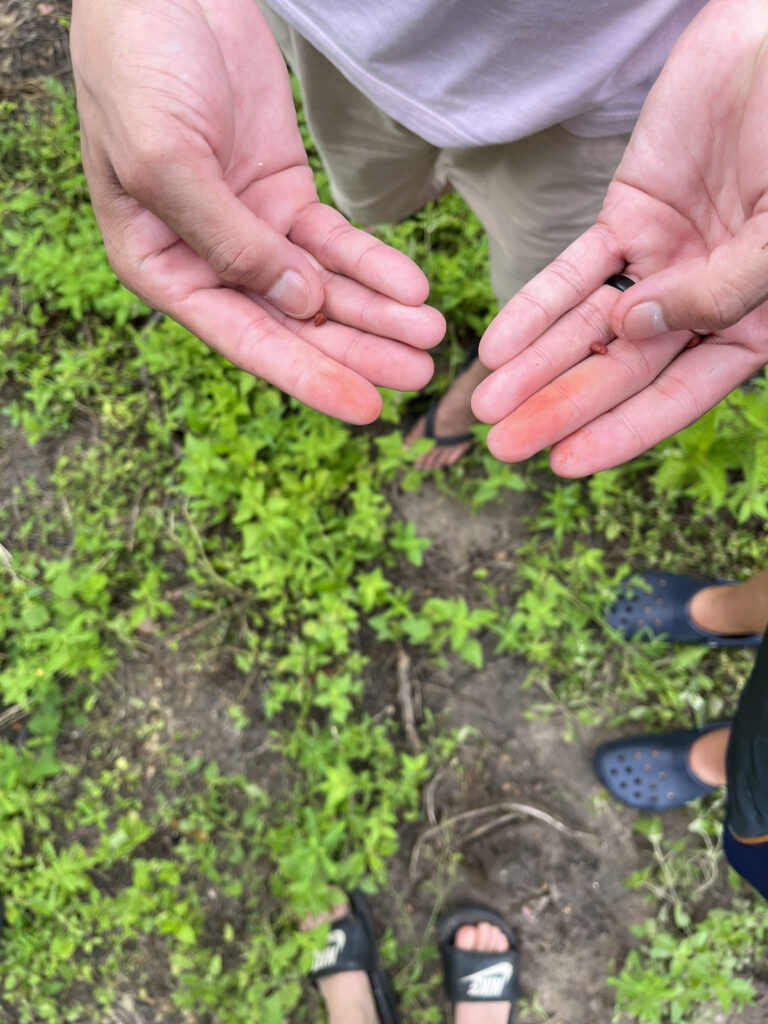
Natural dye produced on small-scale farm in Canelatiua Quilombo, Alcântara, Maranhão © 2024 Cat Diggs
Availability
October to January
Example locations
Canelatiua
Itamatatiua
Santa Maria
Artisanal Fishing, Fishnet Crafting, and Canoe Making
Many Quilombola communities have subsisted off fishing for generations. Coastal and riverside Quilombola communities are known for their well-rounded approach to the practice of fishing, from canoe-making, to fishnet weaving, salt water (ocean) and river (garapé) fish harvesting, to developing rich and diverse seafood diets.

Local fisherman working on their nets in Canelatiua Quilombo, Alcântara, Maranhão © 2024 Cat Diggs
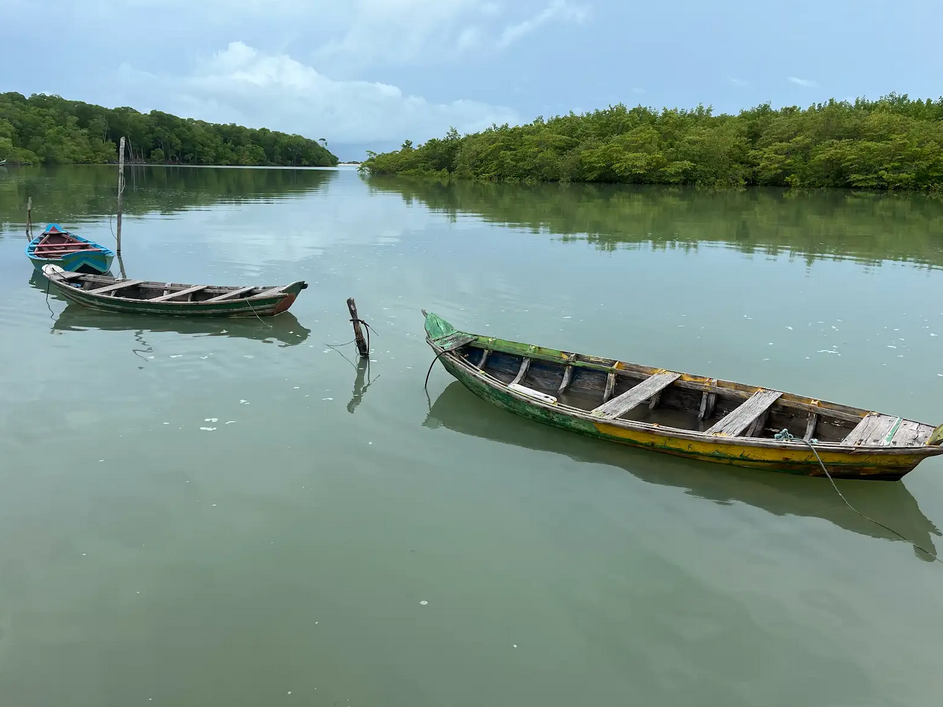
Hand-made fishing canoes in Canelatiua Quilombo, Alcântara, Maranhão © 2024 Cat Diggs
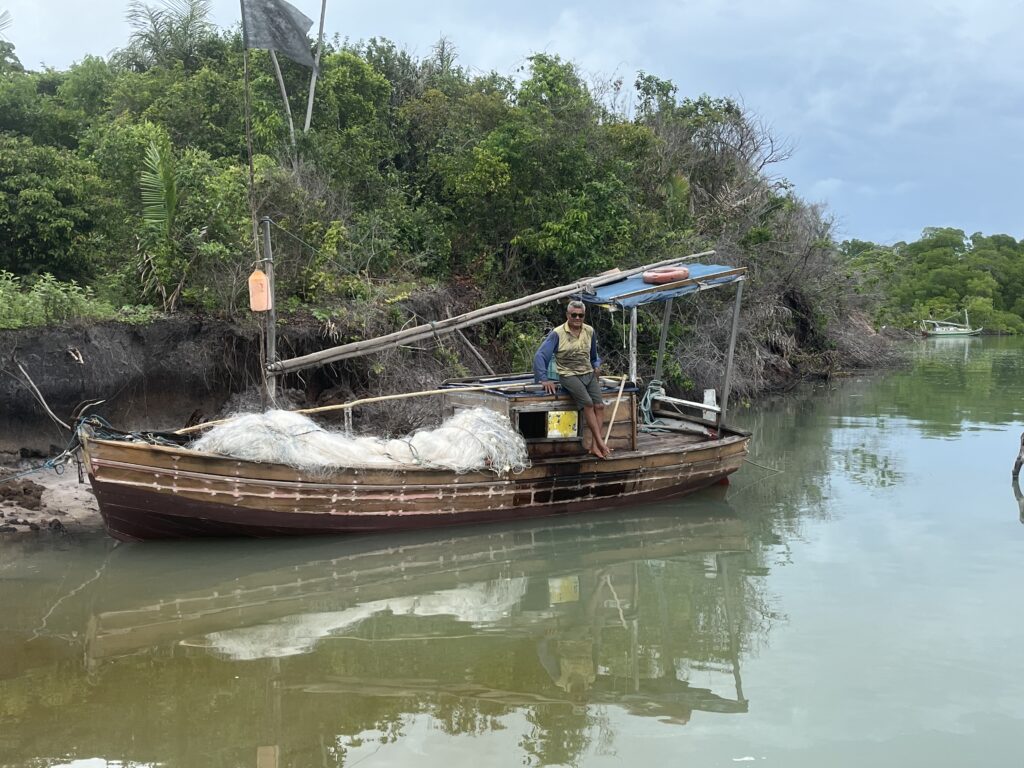
Local fisherman on fishing boat in Canelatiua Quilombo, Alcântara, Maranhão © 2024 Cat Diggs
Availability
Year-round
Locations
Canelatiua
Itamatatiua
Santa Maria
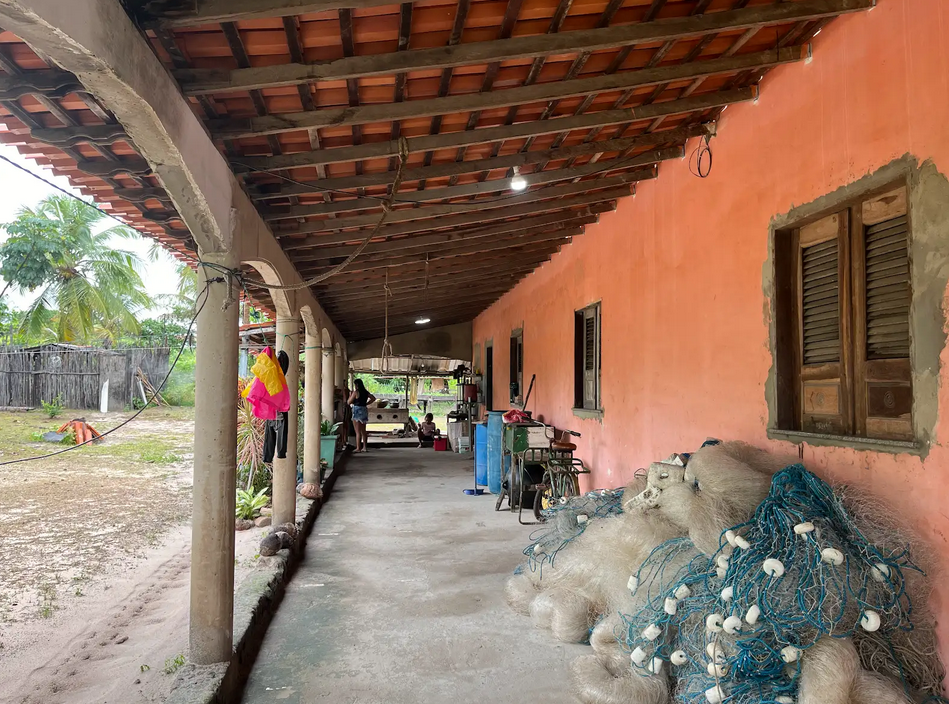
Hand-woven fishing net in Vista Alegre Quilombo, Alcântara, Maranhão © 2024 Cat Diggs
Craftsmaking & Artisanship
Ceramics-Making
Dating back to Alcântara’s slaveholding past, ceramics is an age-old practice, notably for the Quilombo of Itamatatiua, whose proximity to clay deposits has allowed the community to become a notable supplier of ceramics. Making ceramics is a woman-led artform, which has been passed down from generation to generation and has come to be collectivized on a broader scale through the creation of the Itamatatiua Women’s Association. Making ceramics involves numerous steps, including gathering the clay mud by the river with men in the community, storing it to keep it moist, mixing it with water, rolling it into malleable clay balls, putting them into an extruder machine, molding the clay into shapes (bowls, plates, figurines, candle holders, etc.), drying them out for 2 or more days, baking them for 24 hours in communal ovens with the help of men in the community. These ceramics, which have come to be renowned locally, nationally, and even internationally, are sold to numerous restaurants and homeware stores, both domestic and worldwide! To learn more, visit Itamatatiua Women’s Association!
Buriti Weaving
A number of Quilombos in Alcântara, notably the Quilombo of Santa Maria, are known for handicraft work, specifically the ancient tradition of braiding plant fibers from the buriti palm tree, which is native to the region and grows by riverside areas. The linen of the youngest leaf of the palm is dyed using natural dyes which are then braided into numerous objects of everyday use, including mats, cushions, purses, wallets, bags, placemats, and the list goes on. The straw of the buriti palm also serves the many purposes of covering the roofs of homes, making brooms for cleaning, and fertilizing farm plots when it reaches the end of its life. Buriti weaving, another women-led artform, has come to be collectivized on a broader scale by the Santa Maria Artisans Association, which provides a stable income for many Quilombola women and their families who have been able to sell their products in local, national, and even international markets. To learn more, visit the Association’s page!
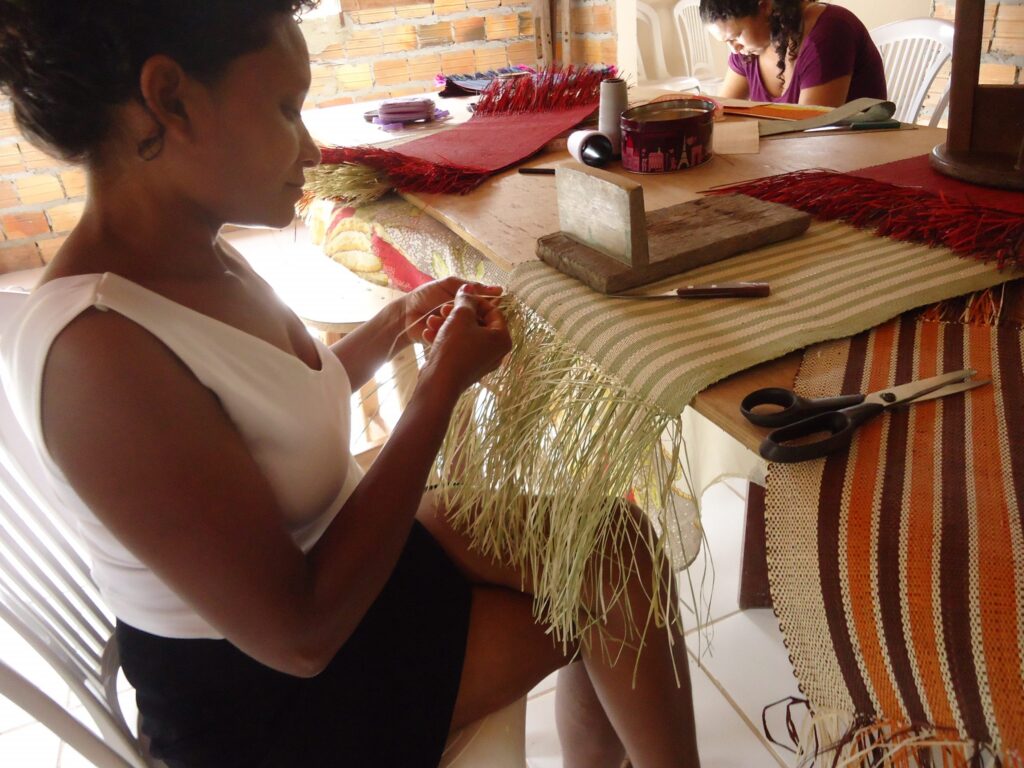
Buriti weaving at the Santa Maria Artisans Association, Alcântara, Maranhão © 2024 Associação Quilombolas dos Artesãos de Santa Maria
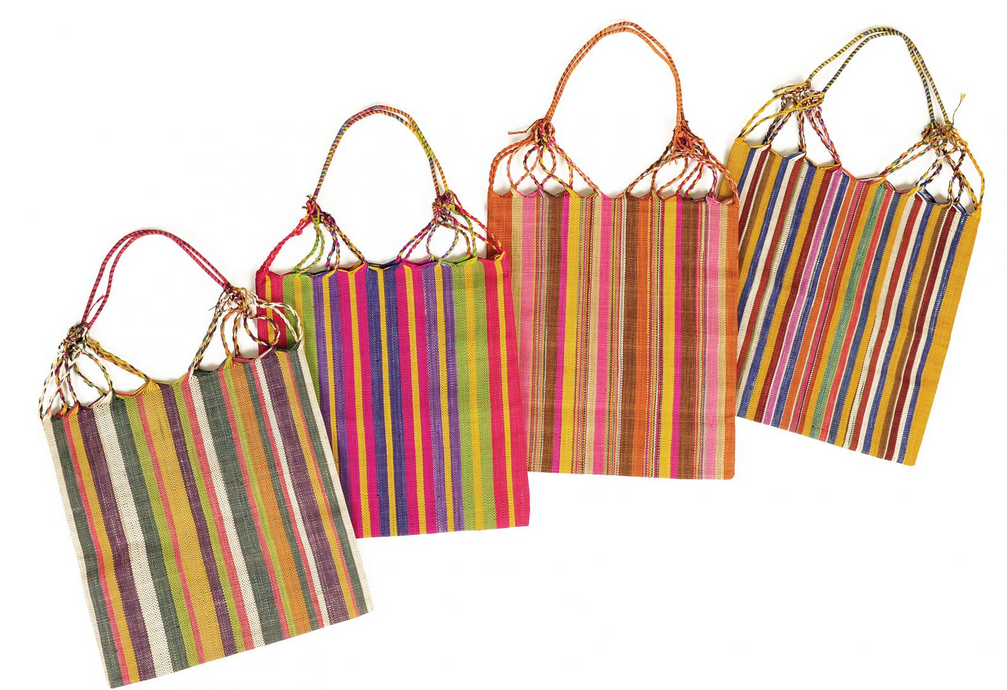
Buriti fiber purses, Alcântara, Maranhão © 2024 Associação Quilombolas dos Artesãos de Santa Maria
Availability
Year-round
Leading Locations
Santa Maria

Making ceramics at the Itamatatiua Women’s Association, Alcântara, Maranhão © 2024 Cat Diggs
Availability
Year-round
Locations
Itamatatiua
Dating back to Alcântara’s vibrant past, the “Quilombola Knowledge Center Nãe Anita” in the Quilombo of Canelatiua serves as a testament to the rich traditions and cultures of the Quilombos in the region. This small museum and community feature an array of artifacts and tools used by Quilombola people across Alcântara, showcasing their cultural heritage.
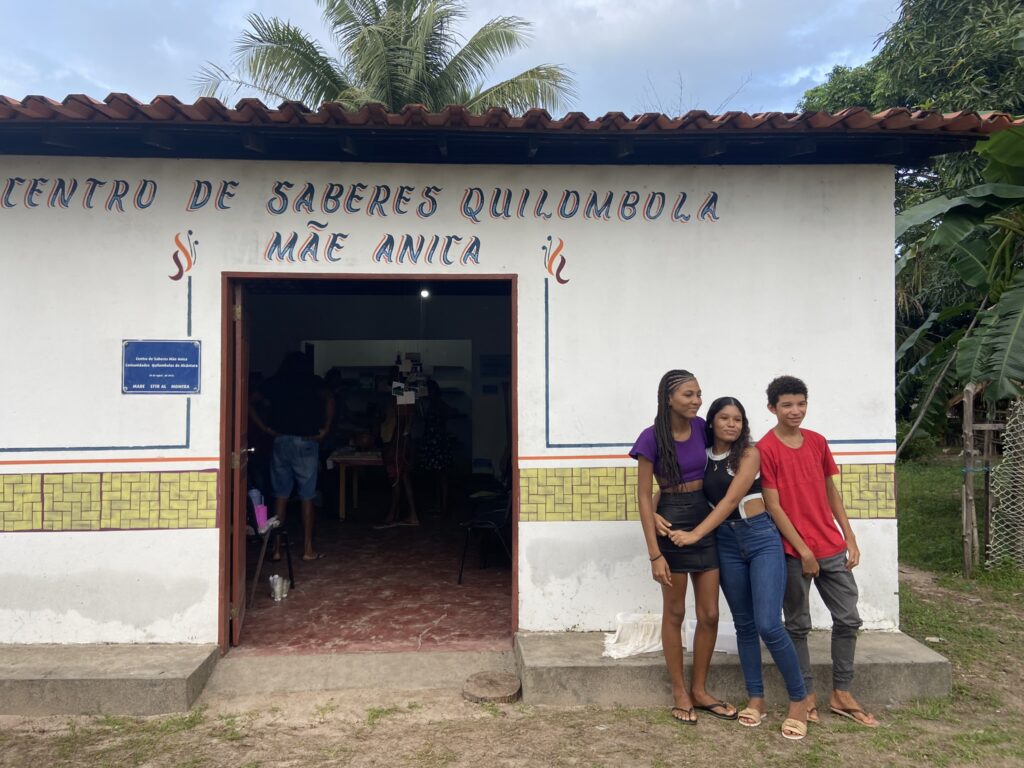
Exterior of the the Knowledge Center © 2024 Ana Paula Pimentel Walker
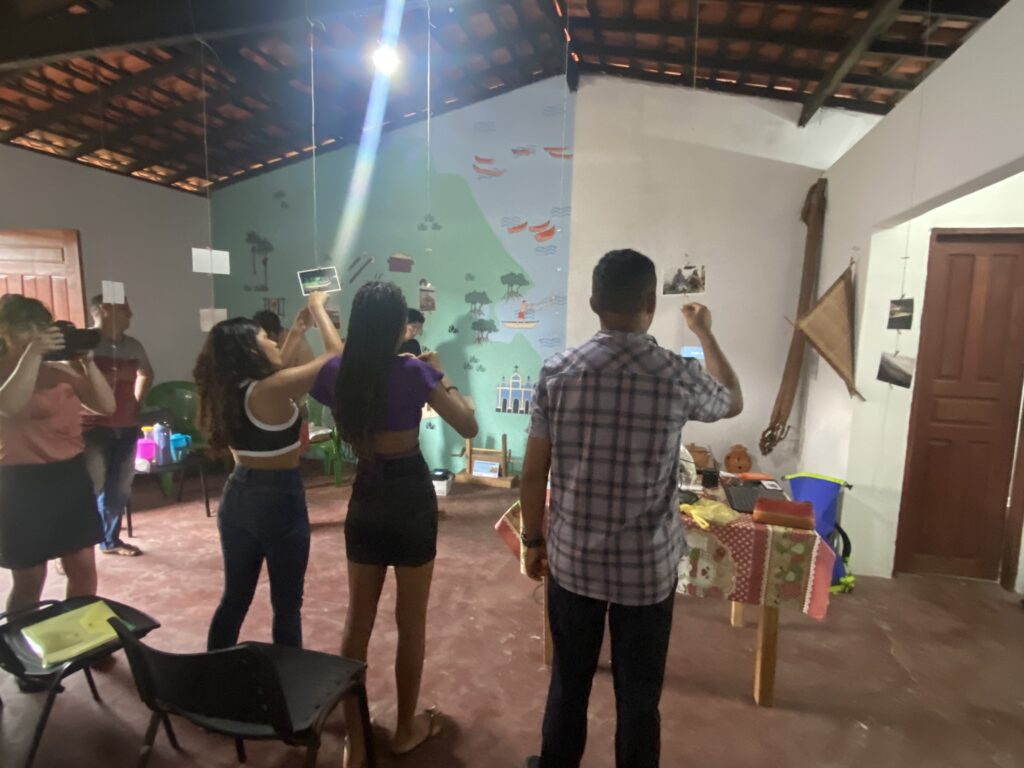
Interior of the the Knowledge Center © 2024 Ana Paula Pimentel Walker
Availability
Year-round
Locations
Canelatiua
Musical Traditions
Creole Drum
This joyful and colorful dance, also known as Tambor de Creole, is of African origin and has been practiced by descendants of enslaved peoples for generations in the Brazilian state of Maranhão, including our region of Alcântara. The dance was developed in praise of Saint Benedict, who is one of the most beloved saints in the Black community of the region. The occasions for performing the Creole Drum are numerous, ranging from birthday parties, family member arrival or farewell celebrations, the birth of a child, a soccer game victory, a gathering of friends, etc.
Reggae Music
Reggae is an integral part of our identity as Quilombola peoples of Alcântara. Its origins can be traced back to Jamaica in the 1960s. It is a form of radical Black self-expression and liberation, rooted in the marooning traditions of the African diaspora of which our Quilombola communities of Alcântara are an integral part. Rarely will you partake in a festivity in our communities where reggae is not being performed or played in the background. Did you know that São Luís was the second reggae capital of the world outside of Jamaica? Visit our urban Quilombola community of Liberdade for an unforgettable reggae-listening and dancing experience!
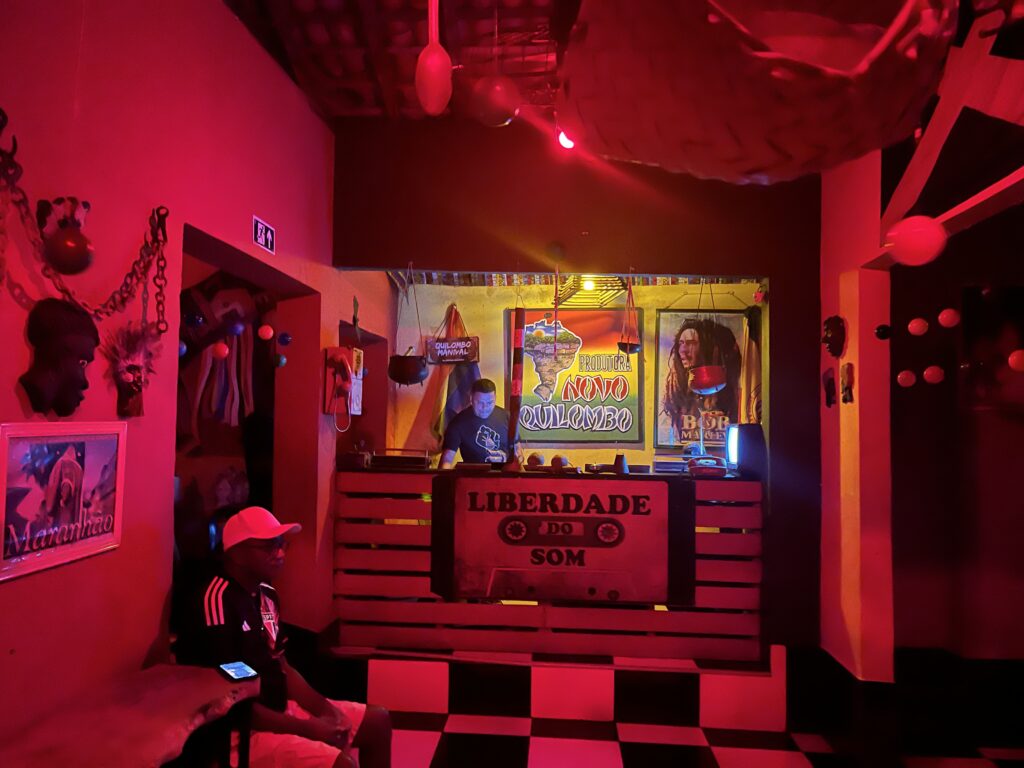
Reggae music venue in Liberdade urban Quilombo in São Luís, Maranhão © 2024 Cat Diggs

Bob Marley mural in São Luís, Maranhão © 2024 @novoquilombo
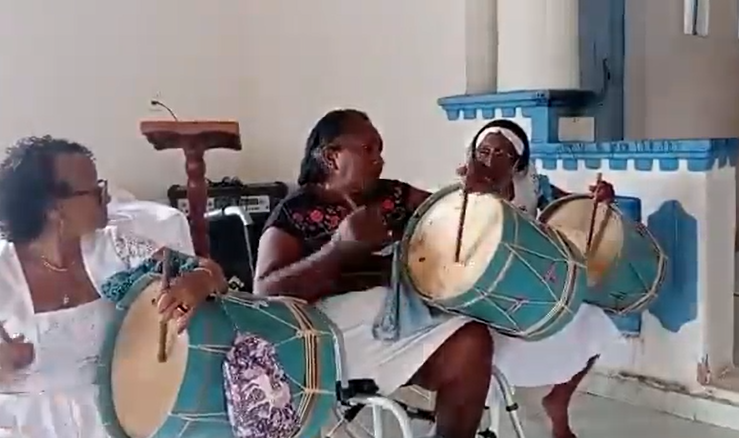
Drummers for the Saint Teresa Festival. Credits @quilomboitamatatiua
Availability
Year-round
Locations
São Luís
Alcântara city
Canelatiua
Vista Alegre
Mamuna
São João de Cortes
Santa Maria
Itamatatiua

Community elder playing the Creole drum in Itamatatiua Quilombo, Alcântara, Maranhão © 2024 Cat Diggs
Availability
Year-round
Locations Itamatatiua
Leisure Activities
Visiting the Beach
While not directly tied to traditional economic and subsistence activities, visiting the beach holds cultural significance in Quilombola communities as a form of leisure and connection to nature. It offers opportunities for recreation, socializing, and spiritual reflection, contributing to the holistic well-being of community members.
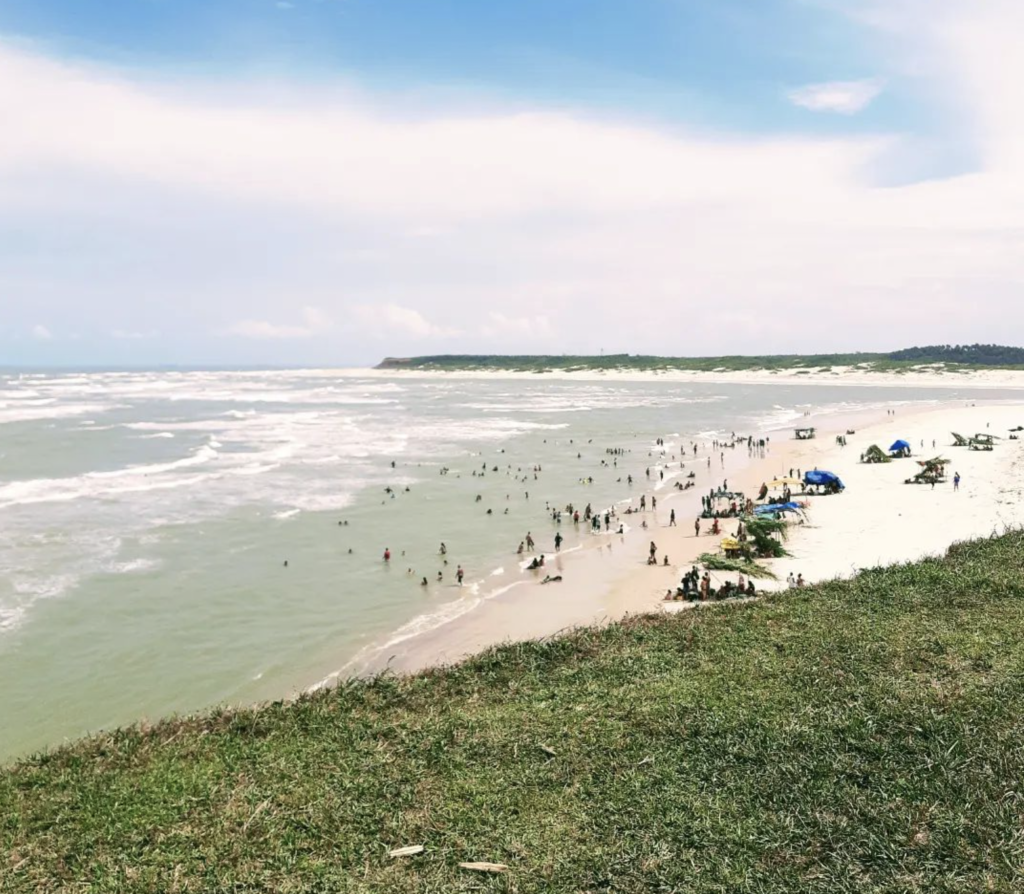
Beach in Mamuna Quilombo, Alcântara, Maranhão © 2024 @Mamuna Alcantara
Visiting the Bars and Restaurants
While our Quilombola communities are hard at work in the fields farming, out on our waterways fishing, or making crafts, we also deeply value spending time in community. Our local bars and casinos (gathering places) are great places for us to do so, sit back, relax and take in the beauty and preciousness of our lives, ecosystems, and one another!
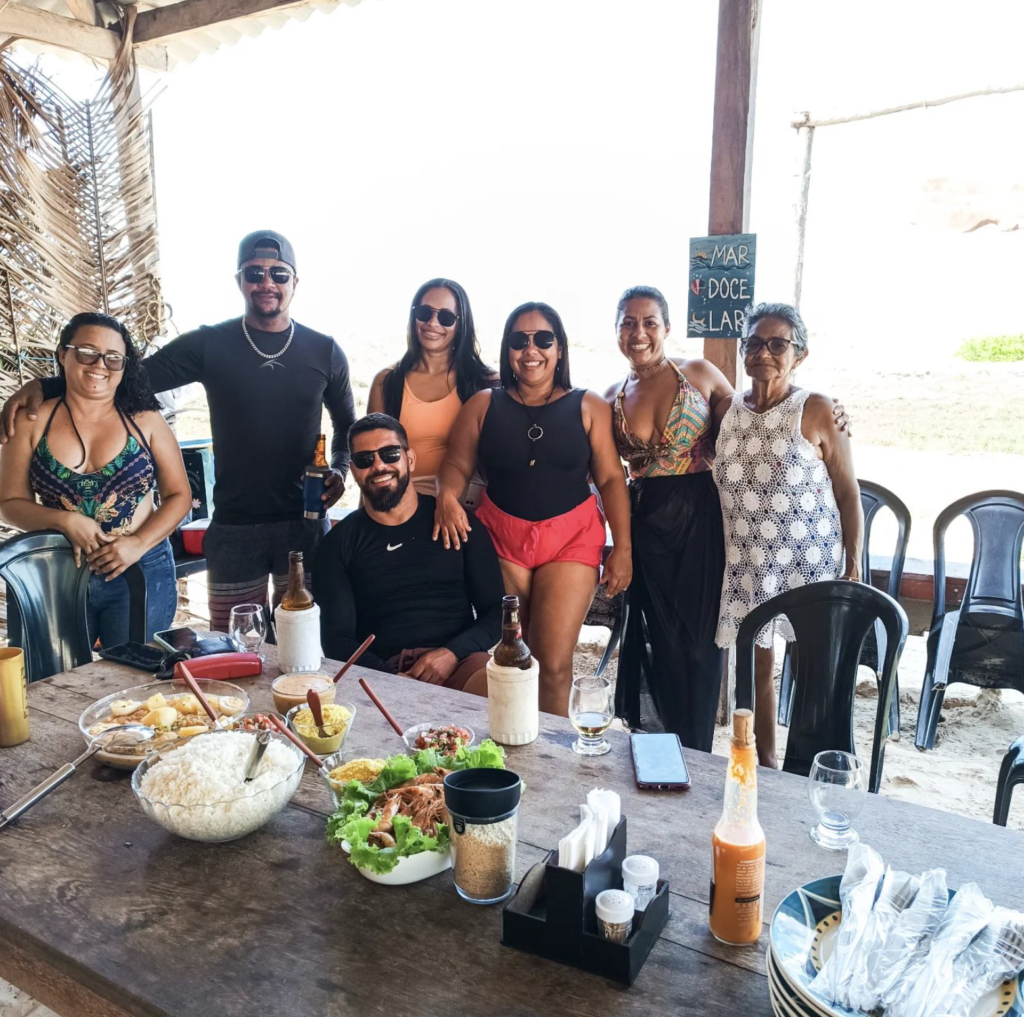
Family and friends at a restaurants in Vista Alegre Quilombo, Alcântara, Maranhão © 2024 @Restaurante Som do Mar
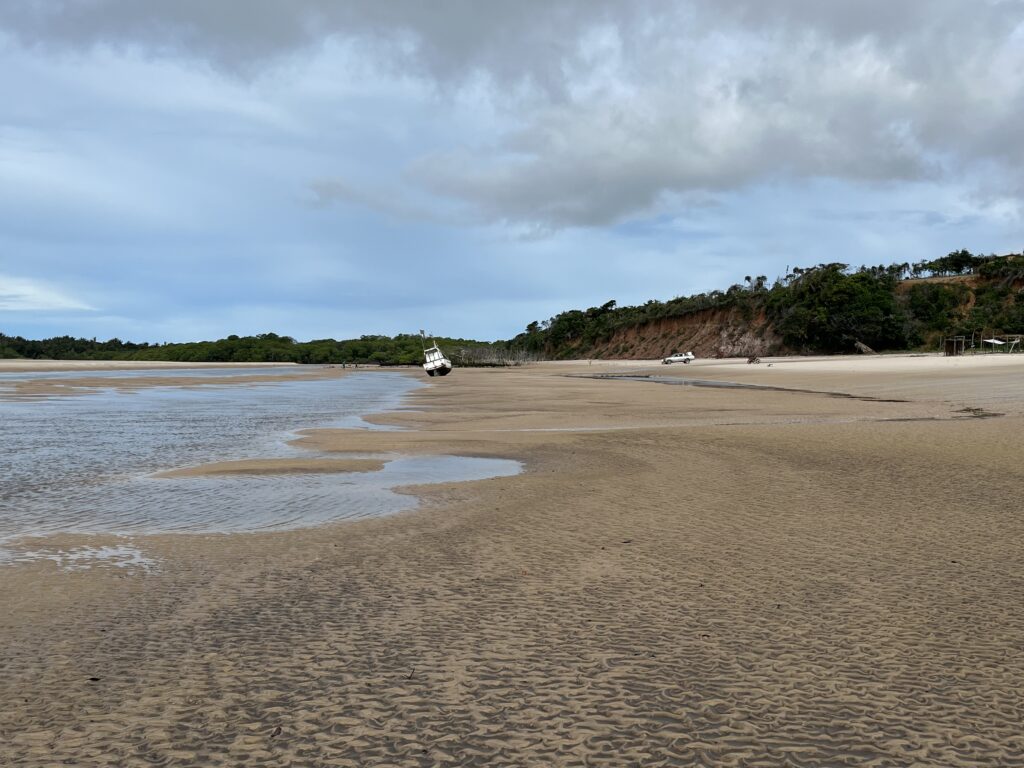
Beach in Vista Alegre Quilombo, Alcântara, Maranhão © 2024 Cat Diggs
Availability
June to January
Locations
Canelatiua
Vista Alegre
Mamuna
Other coastal communities

One of the bar venues in Vista Alegre Quilombo, Alcântara, Maranhão, © 2024 Cat Diggs
Availability
Year-round
Locations
São Luís
Alcântara city
Canelatiua
Vista Alegre
Itamatatiua
Festivities
The Feast of the Immaculate Conception

Flier for the Feast of the Immaculate Conception celebration in Canelatiua Quilombo, Alcântara, Maranhão © 2024 @quilombocanelatiua
The Feast of Immaculate Conception, a traditional festivity rooted in the Catholic Church, has been celebrated in Canelatiua for over 100 years and was founded in 1919 by a man referred to in the community as the Old Angel. The responsibility of organizing the festivities and abiding by its traditions and protocols has been passed down from generation to generation, from family to family, since then. Many people visit Canelatiua during the several-day feast in early December of each year.
Time
Early December
Location
Canelatiua
Festivities of Our Lady of Santana
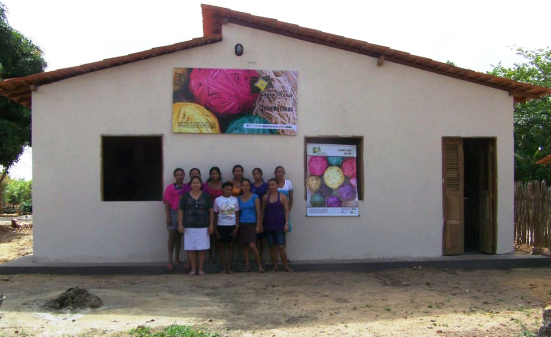
Artisans gathered in front of the Santa Maria Artisans Association, Alcântara, Maranhão
© 2024 Associação Quilombolas dos Artesãos de Santa Maria
With 80% of the Santa Maria Quilombo community being Evangelical, one of their key traditions is the celebration of Our Lady of Santana, where the community members celebrate their devotion to Lady Santana through a feast.
Time
Late July
Location
Santa Maria
Dance of the Blacks
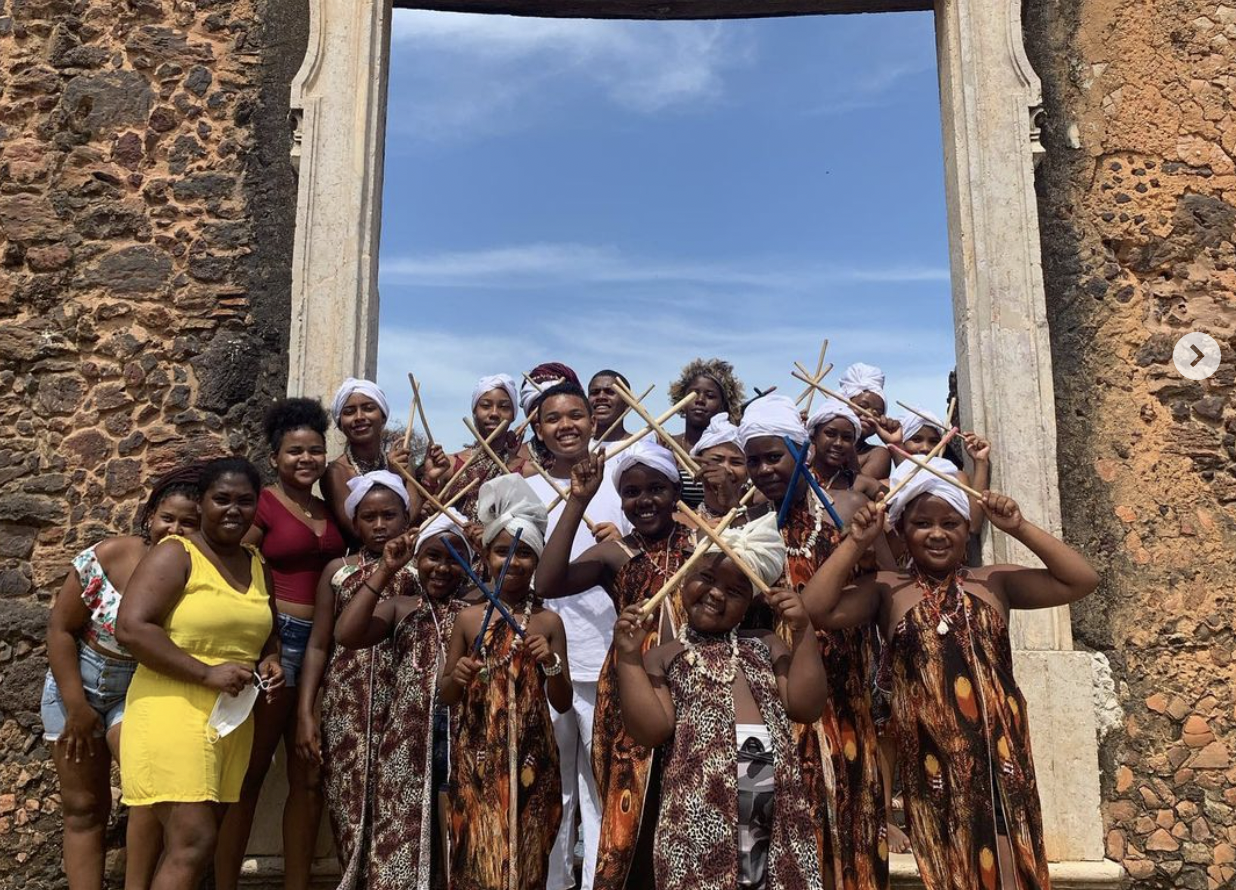
Dance of the Blacks dancers and drummers gathered together in the City of Alcântara, Maranhão © 2024 @quilomboitamatatiua
The Dance of Blacks, which originated in Itamatatiua, is unique to this Quilombola region. In this Afro-inspired dance, women wear colorful skirts and turbans, and men perform the drums. Through the Dance of the Blacks, we celebrate our pride of being Black and Quilombola! To witness a performance, contact us on our instagram @Dança do Negro or @quilomboitamatatiua.
Time Year-round, by appointment
Location Itamatatiua
Saint Teresa Festival
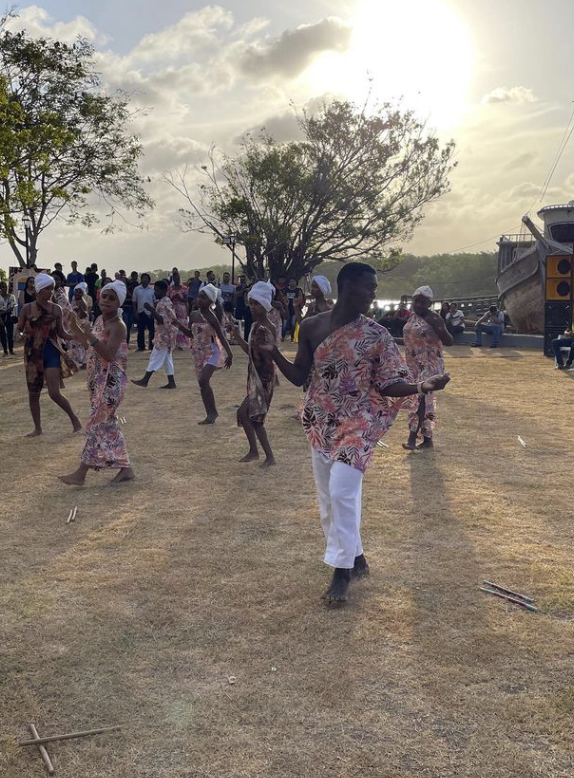
Dance of the Blacks at the Saint Teresa Festival of Itamatatiua Quilombo, Alcântara, Maranhão © 2024 @quilomboitamatatiua
Itamatatiua also hosts festivities within the community, notably to commemorate Saint Teresa’s gift of land to Quilombo peoples of that region. Residents commemorate this event every October by holding a festival that includes dancing to reggae music, parading with drums and costumes, and enjoying a feast. Two residents of the Quilombo, one man and one woman, are selected each year to be judges for the festivities and lead the organizing efforts, around transportation, food preparation, costumes, etc. This is a major months-long planning endeavor for the community each year.
Time October
Location Itamatatiua
Follow us!
For more information on the Quilombos of Alcântara, follow us directly on our Instagram pages or websites.
Alcântara
@Alcântaramabrasil
Associação Quilombolas dos Artesãos de Santa Maria
Facebook
Canelatiua
@quilombocanelatiua
Itamatatiua
@quilomboitamatatiua
Mamuna
@quilombo_mamuna
São João de Cortes
@sao_joao_de_cortes_raiz
Vista Alegre
@quilombo.vistaalegre
